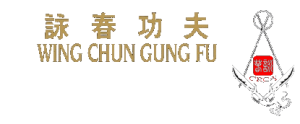The progressive strategy
There can be the time when a student comes and says that Wing Chun doesn’t work because he tried to fight and he wasn’t able to apply with efficiency the “Wing Chun” strategy.
When you ask him what he tried to do, quite always he says:”Well, of course I tried to close the gap and fight from contact with his arms”.
It comes from the one of the 17 musts “trapping must be continuous”.
Of course it is right, because “trapping” is a situation (not only a technique) where we can hit him and he can’t hit us.
To gain a trapping situation, contact is useful, because at least 2 proverbs say: “Touching the oppoment’s arm bridge improves the situation” and “by sticking and controlling the opponent, the chances of losing are reduced”.
But when we try to apply it in a non cooperative environment, free sparring or real fight, with someone who is really good in fighting (expecially if he doesn’t do Wing Chun), we find that it is not so easy to close the gap, create a bridge and fight with a continuous trapping.
To improve this, it is better to split the “strategy” into progressive steps:
1) Only Yang techniques;
2) Complex attacks;
3) Complex sequences;
4) Close the gap and contiunous trapping.
Only Yang techniques
Here we apply the proverb:”If there is a bridge, counter it by parrying”.
Yang techniques are simple and fast and also the fastest way to gain centerline advantage.
Against someone who is really fast to close, hit and regain distance, they can be used with efficiency.
When we are good in applying Yang techniques, we can go up a step.
Complex attacks
Now we react with complex techniques (Yin and Yang together) to every opponent attack.
One attack, one single complex technique.
When we are good in this, we can go up step.
Complex sequences
Now things gets interesting. We do not do a single response to the opponent attack, but we try to link several moves with trapping principle inside.
We can use principle and techniques coming from “slow attacks” and “attack cycles”.
Now, for every attack, we try to use a combination of techniques (with trapping principle) that comes, for example, from the drill I mentioned (but other can be used).
When we are good in this, we can go up the final step.
Continuous trapping
Now we know how to stop an attack with Yang techniques, complex attacks, and link them in little trapping sequenses, agains a non cooperative opponent.
Now we are ready to continue the trapping sequence and use the “trapping must be continuous” principle.
Now we are ready to do it, because we know how to apply every element of the strategy.
Now we are ready to close the gap, create a bridge and continuous trap the opponent to his defeat.



